FNR Field Reports: Lucas Cacula Offers Week 2 Update from Sweden Study Abroad Program
Throughout the 2024 Sustainable Natural Resources study abroad course in Sweden, FNR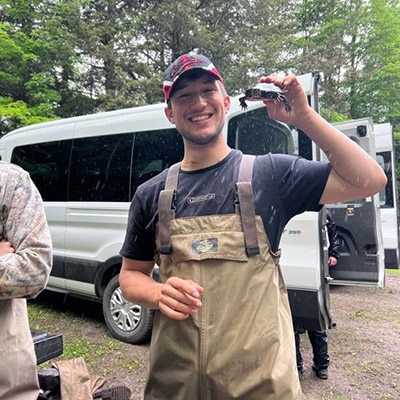 students will check in to provide weekly updates on the trip highlights. Senior wildlife major Lucas Cacula takes the reins on Week 2, sharing about stops in Alnarp, Söderåsen National Park, Snogeholm, Copenhagen and Christiana. Cacula, a Carmel, Indiana native, is the current vice president of the Purdue student chapter of The Wildlife Society.
students will check in to provide weekly updates on the trip highlights. Senior wildlife major Lucas Cacula takes the reins on Week 2, sharing about stops in Alnarp, Söderåsen National Park, Snogeholm, Copenhagen and Christiana. Cacula, a Carmel, Indiana native, is the current vice president of the Purdue student chapter of The Wildlife Society.
During the four-week Sustainable Natural Resources study abroad course students will examine natural resources broadly defined, including forestry, fisheries, wildlife, agriculture, mining, outdoor recreation, and urban sustainability. They will define, discover, and document examples where sustainability of resource use matters. The course explores the effect of terrain, climate, vegetation, faunal assemblages, social structures and technologies on natural resource use. FNR 46000 is a collaboration of Purdue University, North Carolina State University, and the Swedish University of Agricultural Sciences. American and Swedish students work together to research issues in resource management.
The course is co-taught by FNR's Drs. Tomas Hook and Doug Jacobs as well as other instructors from NC State and SLU.
Prelude
I have been having a phenomenal time here in Sweden! We have had several opportunities to learn about the unique way Sweden approaches sustainability. Not only have we learned about sustainability, but we have also had the chance to experience Sweden's rich history and culture.
Monday, July 8
We spent today traveling. We departed in the morning and took a bus to Stockholm Central Station from Skinneskatteburg. We took the train for several hours to Alnarp. The train ride itself was pleasant as we experienced the beautiful Swedish countryside. After reaching our lodging in Alnarp, we had the rest of the day to ourselves. We immediately took to the beach, which is a 20 minute walk from the SLU campus. We enjoyed an afternoon playing soccer in the sand and swimming in the crystal clear waters of the Baltic Sea.
 A collage of images from Alnarp, Sweden.
A collage of images from Alnarp, Sweden. Tuesday, July 9
Today, researchers at SLU Alnarp took time to tell us about their work. We learned about how their experiments can tell us more about climate change, forest diseases, and insects. We went on a short tour of the forest next to campus, where we learned about diseases affecting beech trees. Then we toured the Biotronen on campus. This facility allows researchers to grow plants while controlling factors such as light, humidity, temperature, and CO2 content. We saw an experiment studying how trees adapt to heat waves. The day ended early, giving us another afternoon to ourselves. Some of us took the chance to visit a nearby town called Lund. We toured an old church, visited a history museum, and strolled around the botanical garden. The city was beautiful and full of rich history dating back to the year 990!
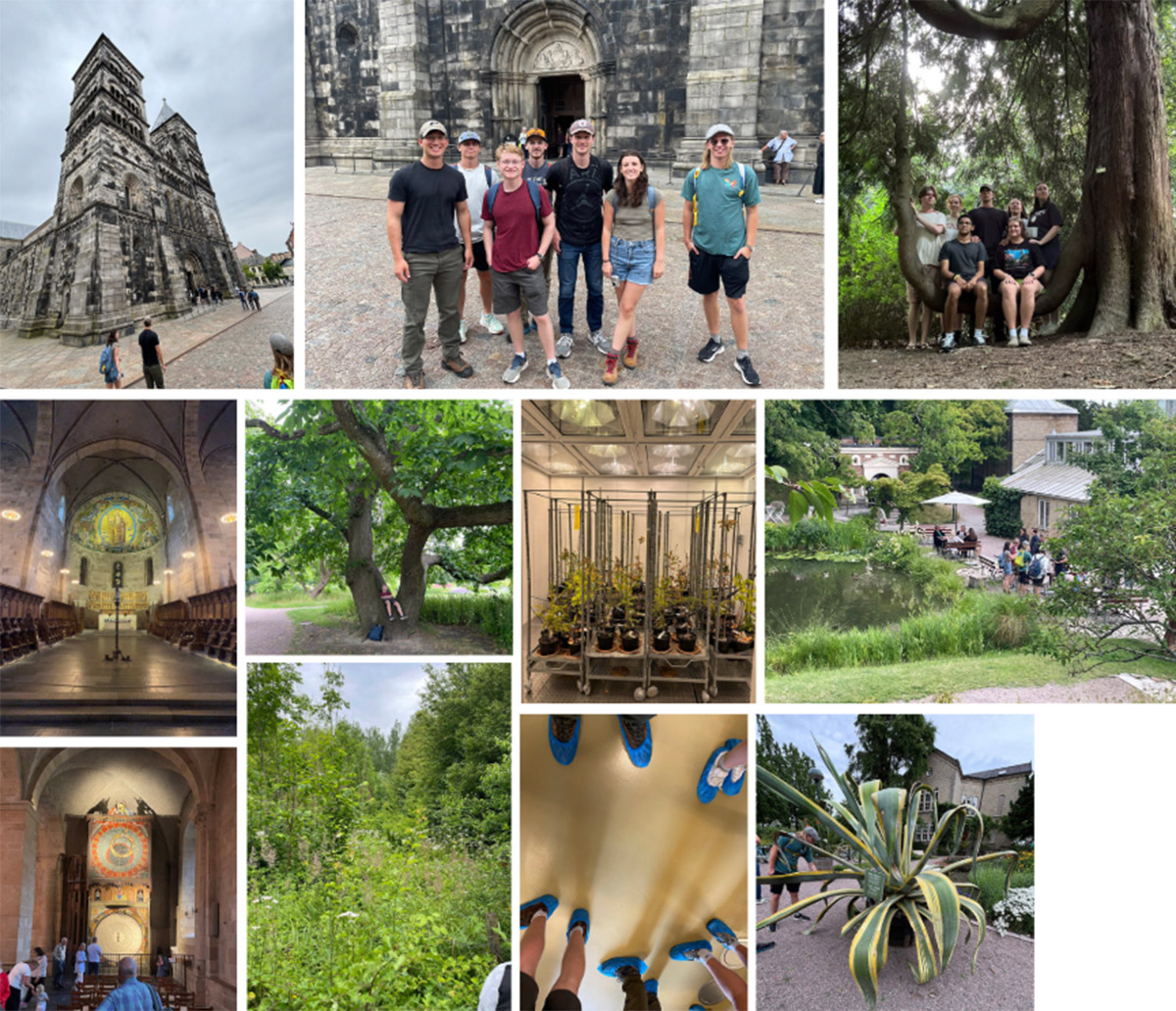 A collage of images from Alnarp, including the Biotronen on the SLU Alnarp campus.
A collage of images from Alnarp, including the Biotronen on the SLU Alnarp campus. Wednesday, July 10
Today we went to Söderåsen National Park with the manager of the park Tove Hultberg. She walked us through the difficulties the park has faced balancing recreation and ecology. We learned about predator control, accessibility, and sustainability. The park itself is beautiful, featuring a diverse forest with vibrant wildlife and amazing views. We also visited a nearby nature preserve, also run by Tove. Here the emphasis is on preserving oak savannas in an effort to generate biodiversity. What I found most interesting were the artificial habitats set up to improve insect biodiversity. These consisted of large wooden crates filled with sawdust intended to mimic the inside of dead trees. Once again, the preserve was beautiful. In every direction are fields of golden and purple grass dotted by massive oak trees.
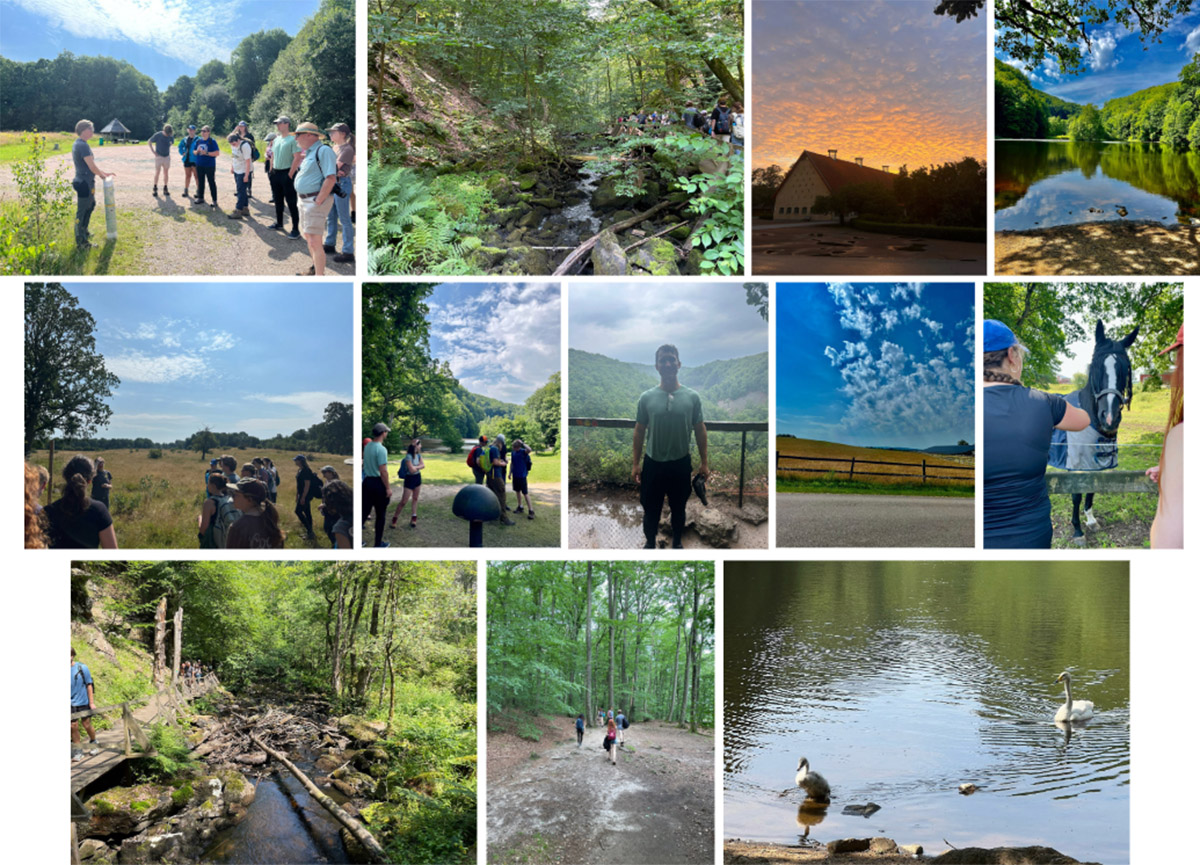 A collage of images taken at Söderåsen National Park and a nearby nature preserve
A collage of images taken at Söderåsen National Park and a nearby nature preserve Thursday, July 11
Today we went to Snogeholm, a production forest. Here was a little different from the other forests we have toured so far. All the trees are neatly planted in rows and marked for future thinnings. Here we learned about how Sweden is moving towards more sustainable forestry, preserving biodiversity and soil health while maintaining a productive forest stand. We also had the opportunity to watch a harvester in action, which was really cool to see!
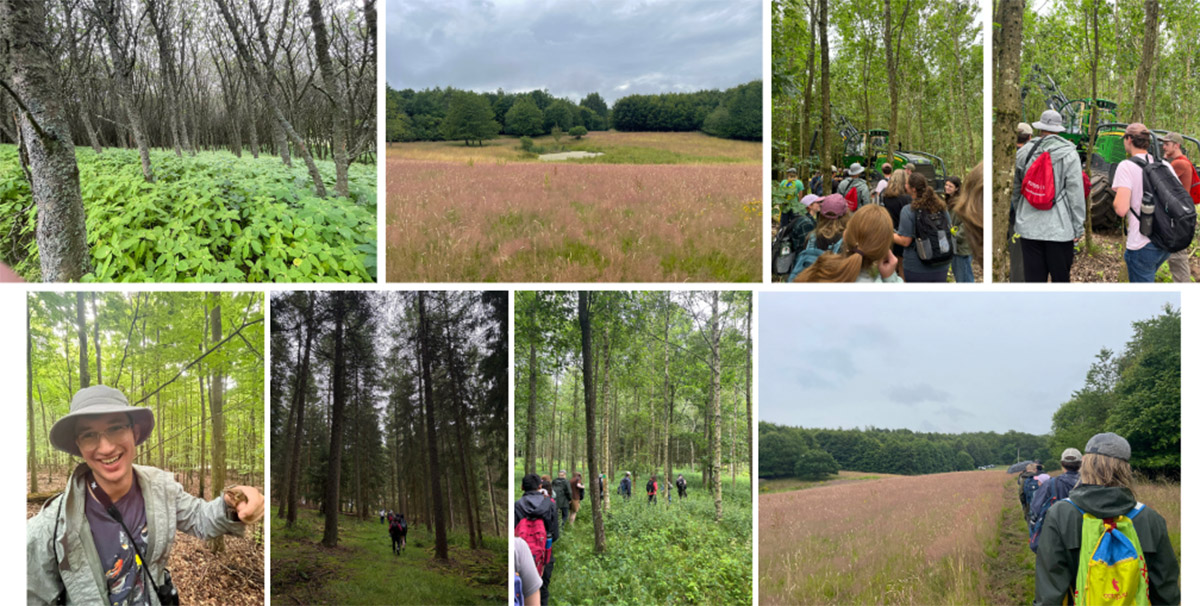 A collage of images taken at Snogeholm.
A collage of images taken at Snogeholm. Friday, July 12
We all got Friday to ourselves! I took this opportunity to take an hour long train ride to Copenhagen. I visited the Christiansborg Palace, which was enormous and ornate. I also climbed to the top of the Church of Our Savior and took in the most unbelievable view of Copenhagen. I later strolled through Nyhavn, which sports a canal full of old and new sailboats alike. There was live music and a bustling crowd which brought a lively atmosphere. Lastly I went to Christiana, a small sovereign district where the streets are filled with incredible art. This place declared itself in the 1970s and has been operating as an anarchist consensus democracy since. Overall, the trip to Copenhagen was an amazing way to spend our day off!
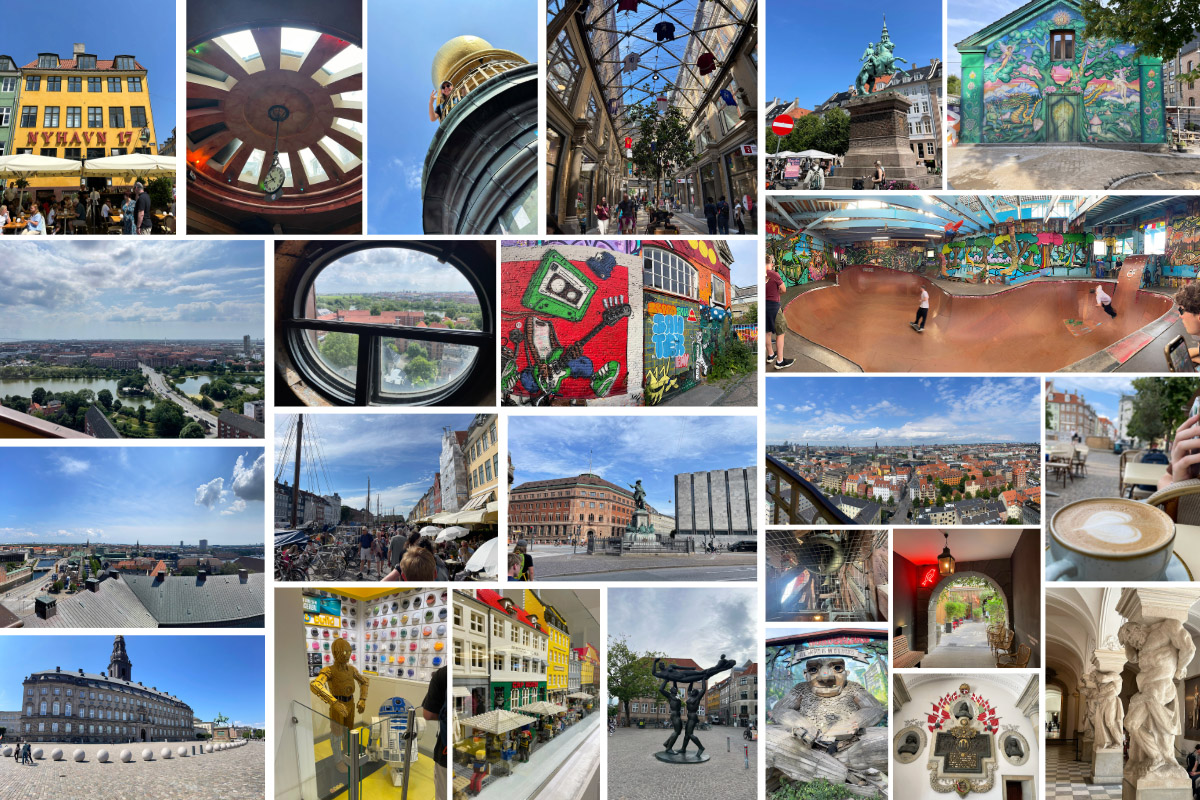 A collage of images of Copenhagen, including the Christiansborg Palace, the Church of Our Savior, as well as Nyhavn and Christiana.
A collage of images of Copenhagen, including the Christiansborg Palace, the Church of Our Savior, as well as Nyhavn and Christiana.  A collage of images of people at the various sites in Copenhagen, Nyhavn and Christiana.
A collage of images of people at the various sites in Copenhagen, Nyhavn and Christiana. 





